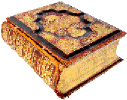After the explanation of these matters the next subject to be added would be the natural characters of the zodiacal signs themselves, as they have been handed down by tradition. For although their more general temperaments are each analogous to the seasons that take place in them, certain peculiar qualities of theirs arise from their kinship to the sun, moon, and planets, as we shall relate in what follows, putting first the unmingled powers of the signs themselves alone, regarded both absolutely and relatively to one another.
The first distinctions, then, are of the so-called solstitial, equinoctial, solid, and bicorporeal signs. For there are two solstitial signs, the first interval of 30° from the summer solstice, the sign of Cancer, and the first from the winter solstice, Capricorn; and they have received their name from what takes place in them. For the sun turns when he is at the beginning of these signs and reverses his latitudinal progress, causing summer in Cancer and winter in Capricorn. Two signs are called equinoctial, the One which is first from the spring equinox, Aries, and the One which begins with the autumnal equinox, Libra; and they too again are named from what happens there, because when the sun is at the beginning of these signs he makes the nights exactly equal to the days.
Of the remaining eight signs four are called solid and four bicorporeal. The solid signs, Taurus, Leo, Scorpio, and Aquarius, are those which follow the solstitial and equinoctial signs; and they are so called because when the sun is in them the moisture, heat, dryness, and cold of the seasons that begin in the preceding signs touch us more firmly, not that the weather is naturally any more intemperate at that time, but that we are by then inured to them and for that reason are more sensible of their power.
The bicorporeal signs, Gemini, Virgo, Sagittarius, and Pisces, are those which follow the solid signs, and are so called because they are between the solid and the solstitial and equinoctial signs and share, as it were, at end and beginning, the natural properties of the two states of weather.
 AstroLibrary 🔎
AstroLibrary 🔎